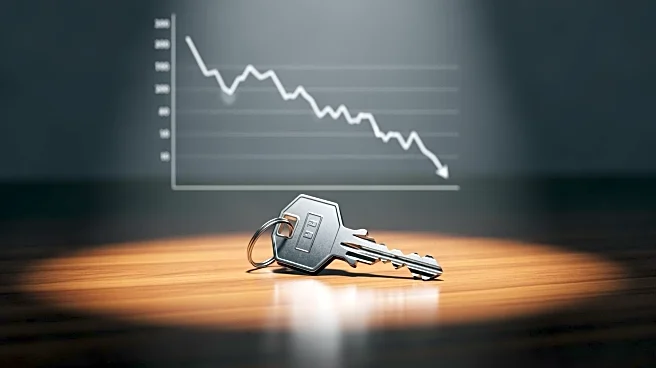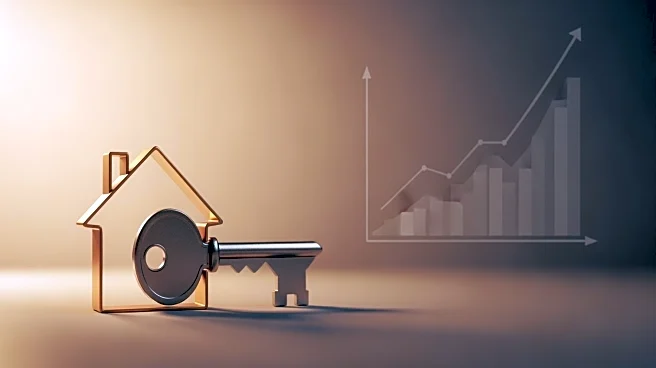What's Happening?
Despite the prevailing mortgage rates hovering around the mid-6% range, some borrowers are securing rates below 6%, with some even achieving rates in the 5% and 4% range. This is largely due to the use
of mortgage buydowns, a financing technique that temporarily or permanently reduces the mortgage interest rate, thereby lowering monthly payments. The popularity of mortgage rate buydowns has increased significantly, with the percentage of listings featuring this option rising from about 1% in 2022 to nearly 6% by late 2023. Loan officer Alana Smock from Elevated Mortgage in Arizona notes that credits in the $15,000 to $20,000 range are common, allowing many FHA and VA buyers to secure rates in the 4% range, while conventional buyers achieve rates in the low 5%.
Why It's Important?
The ability to secure mortgage rates below the national average is crucial for homebuyers looking to manage affordability in a high-rate environment. This trend could stimulate the housing market by encouraging more buyers to enter the market, potentially increasing home sales. It also highlights the importance of strategic financial planning and negotiation in real estate transactions. Buyers who can leverage credits to buy down their mortgage rates may find themselves in a better financial position, potentially leading to increased homeownership rates and economic stability for individuals.
What's Next?
As mortgage buydowns become more prevalent, it is likely that more buyers will explore this option to achieve lower interest rates. This could lead to increased competition among lenders to offer attractive buydown options, potentially driving innovation in mortgage products. Additionally, real estate agents and financial advisors may need to become more adept at guiding clients through these complex financial arrangements to maximize their benefits.
Beyond the Headlines
The growing use of mortgage buydowns raises questions about the long-term sustainability of such financial strategies. While they offer immediate relief in terms of lower monthly payments, the upfront costs associated with buydowns could pose a financial burden for some buyers. Furthermore, the reliance on buydowns may mask underlying issues in the housing market, such as affordability and access to credit, which could have broader economic implications if not addressed.











